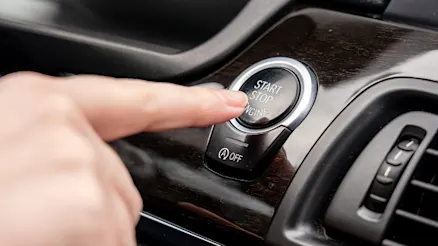
Why does my car behave differently when I start it in the morning?
Ever notice your car feels different in the morning? Learn why cold starts affect performance and how to keep your car running smoothly year-round.


Ever notice your car feels different in the morning? Learn why cold starts affect performance and how to keep your car running smoothly year-round.

Regularly checking your tyre pressure is crucial to your vehicle’s safety, fuel economy and optimal driving.

Looking for the perfect gift for the car enthusiast in your life? Carma’s experts have you covered.
Having a ‘roadworthy’ car sounds straightforward enough – but what does it actually mean?
You might have been told you need a roadworthy certificate in your rego renewal notice. You might be re-registering or selling a car, or maybe your car was issued a defect notice that you need to rectify.
Whichever situation applies, let’s break down exactly what roadworthiness means in Australia and the process of getting a roadworthy certificate.
Roadworthy means that a car is fit for safe use on public roads. Broadly speaking, a car’s roadworthiness is based on its brakes, body, tyres, lights, exhaust and steering being in good working order.
A roadworthy certificate is a document supplied by an authorised inspector that deems a car fit to drive. This certificate can also be called a RWC, Vehicle Inspection Report, Safety Inspection Report, Safety Certificate, eSafety Check or ‘pink slip’, depending on where you live in Australia. Just to keep things simple, and not confusing at all!
Fun fact: You might’ve also heard of this process as going over ‘The Pits’. This term refers to the inspection pits sometimes used by inspectors to check a vehicle’s undercarriage.
When you need a roadworthy certificate you’ll typically go to an approved inspector, who will look over the vehicle. Then they’ll either lodge a roadworthy certificate, or provide a report outlining necessary repairs to meet the requirements.
Like the name, the criteria varies depending on where your vehicle is registered. Generally speaking, these things are likely to be checked over:
The reasons you might need to get a roadworthy certificate or its equivalent also vary from state to state. You might be required to get a RWC when your car rego is due; if you’re transferring registration; if your vehicle is found to be defective by a police officer; or if you’re re-registering an unregistered vehicle. You might also need to get an RWC if your car has been structurally modified or had changes to the brakes, steering, or suspension systems.
You can find all the up-to-date info for the different requirements and processes on your state/territory government’s website. Here are the handy links: NSW, Victoria, Queensland, SA, NT, WA, Tassie, and the ACT.
In New South Wales, most registered light vehicles over five years old will need a safety inspection report, or ‘pink slip’, as a condition of registration renewal. A pink slip shows that the vehicle passes roadworthy standards.
If you want to register an unregistered vehicle in NSW, it’ll generally need to gain a blue slip instead. As well as passing roadworthy standards, a blue slip shows that a vehicle passes identity and design standards too.

It’s a common misconception that a roadworthy certificate means the vehicle is in top condition, or that every car part has been checked over. A lot of non-safety components won’t be checked in a roadworthy inspection, such as rear window washers and electric windows. It also won’t typically include checking things like the motor, oil, or gearbox.
Misconception #1: An RWC guarantees ongoing reliability
Roadworthy isn’t the same as reliable. Most roadworthy certificates are valid for a number of days or months and/or a certain number of kilometres, and they also don’t reflect mechanical condition. A roadworthy certificate is not the same as a pre-purchase inspection carried out by a mechanic, and it’s important to understand that difference – particularly if you’re about to buy a second-hand car!
Misconception #2: You have unlimited time to fix issues
If your registered car fails the first roadworthy inspection, you’ll have a set number of days to fix the issues and return for another inspection. The same goes for if the police pull you over and give you a defect notice (also known as a yellow sticker). If you fail to have those repairs completed and cleared, you can risk your car rego being suspended.
Misconception #3: All states require roadworthy certificates for private sales
While some do, not all states or territories require a roadworthy certificate prior to a car being transferred to a new owner. In some locations, like WA and SA, it’s up to the buyer to do their due diligence. Wherever you’re buying, it’s wise to get a pre-purchase inspection with a mechanic – or to buy from a reputable dealership like Carma that does comprehensive checks and provides a warranty with every pre-owned vehicle.
While the terminology, reasons and processes for roadworthy certificates all vary across the country, the one consistent aim is checking immediate safety compliance. Taking the time to understand your local area's process can help keep unsafe vehicles off Aussie roads – and potentially save you a heap of hassle and heartache when it comes to buying your next car!